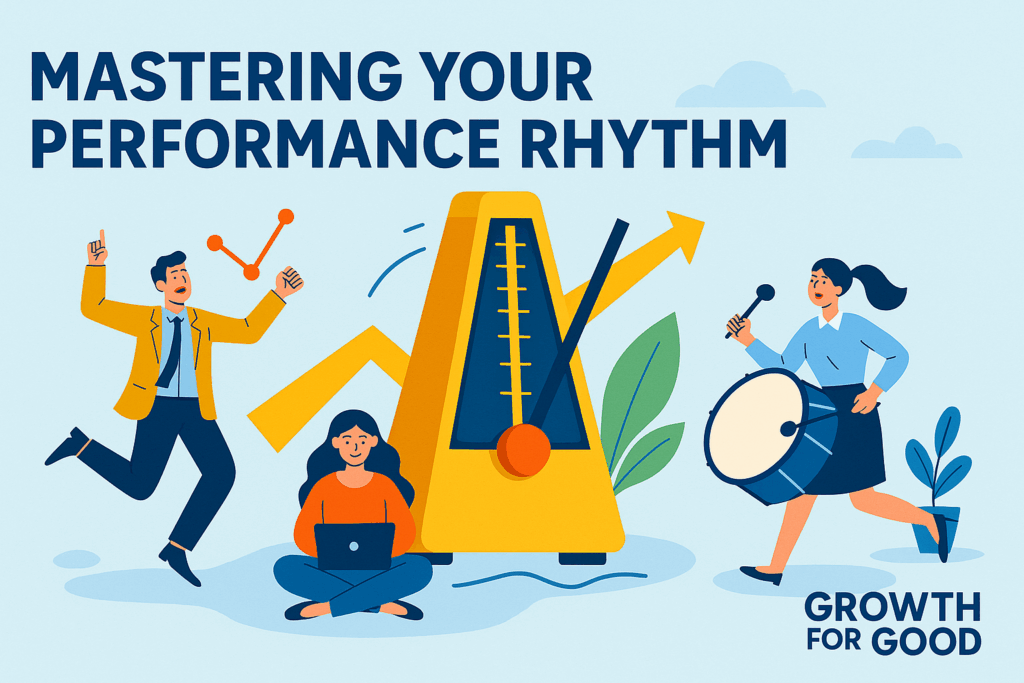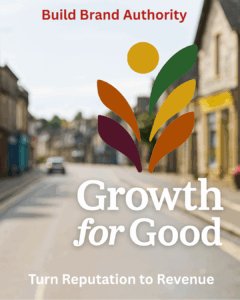
Growth for Good Insight: Got Rhythm? – Build Momentum That Scales
Many of the businesses I’ve met, across the Highlands and Islands, often begin with a lot of grit, a fair slice of goodwill, and one hell of a determined founder. But what most soon find out is that hard work alone doesn’t scale. What turns early momentum into sustainable performance? Rhythm means doing the right things regularly and on your own, without needing constant guidance.
A business without rhythm swings between firefighting and fatigue. A business with rhythm brings consistency, clarity, and improved results, even when the founder steps back.
Why Rhythm Beats Hustle
When teams lack a shared cadence, they:
- Wait for instructions.
- Lose focus mid-week.
- Over-relying on the founder.
- Confuse movement with momentum.
But rhythm changes this. With it, everyone knows what matters, when to act, and how to win. It turns what I’ve often referred to as ‘busyness’ into progress. This is how smart SMEs outperform louder competitors.
Growth for Good Principle: Strategy needs systems. People live strategy every day through rhythm.
Core Rhythms of a High-Performance SME
To move from chaos to compounding clarity, try to embed these rhythms:
Weekly Focus Meetings (30 mins) Here, you can share top priorities, Identify blockers early and align on ownership and next steps.
Monthly Performance Reviews (1 hour) This is where you can review KPIs and variances, look to solve cross-functional issues and, importantly, lock in commitments.
Quarterly Planning Sprints (half-day) These allow you to shift your attention to what truly matters. Reflect on progress and lessons and to realign the team’s energy to the goals.
These create a backbone for your operational flow. Performance Rhythms replace urgency with intentionality.
Daily flow for Highland teams
Micro-habits can make a macro difference. Smart businesses look at adopting these well tested practices: Have a morning huddle (10 mins) – energise, align, clarify. Implement protected deep work blocks – to boost productivity. And add an end-of-day personal reflection (5 mins) – capture insights, reset focus.
Small actions, repeated daily, become a cultural flywheel. They create a workplace that is less reactive and more resilient.
Tools That Reinforce Performance Rhythms
You don’t need fancy tech to build rhythm. What you need are clear signals and shared visibility:
- Shared dashboards – everyone sees the same data in real time.
- Role-based scorecards – define ownership and accountability.
- Asynchronous updates – replace report meetings with shared notes.
Start simple. Excel and whiteboards are fine. It’s the habit, not the software, that makes the difference.
What to Do This Week
If you only do three things, start here:
- Schedule a 30-minute team check-in – keep the agenda fixed and sharp.
- Assign one key performance metric per person – clarity beats complexity.
- Run a short Friday debrief – What worked? What didn’t? What’s next?
Making Rhythm Work in the Real World
Rhythm only sticks when leaders commit. and that means showing up, being consistent, and holding space for others to perform. Rhythm isn’t another task; it’s the tempo that makes all your tasks better.
In high-functioning teams, rhythm becomes a signal of trust. It cuts down on overcommunication, reduces stress, and prevents important things from being missed.
Done well, rhythm even becomes your retention tool. It keeps good people focused, connected, and clear on how to succeed.
Performance Rhythms is the scalable edge.
Most businesses are full of ambition but the ones that scale are full of rhythm. Systems win over sprees. Progress beats panic.
If your team feels stuck or your leaders are running on empty, rhythm might be the reset you need. So, have you got rhythm in your business?
There is a wealth of further reading and academic research that highlights the value of this topic. Try this article by Entrepreneur.com for starters. Next in the Growth for Good Series: Building Brand Authority – turning your reputation into a revenue asset.
